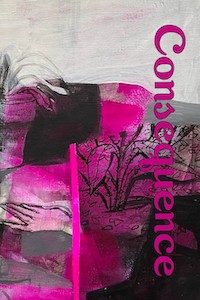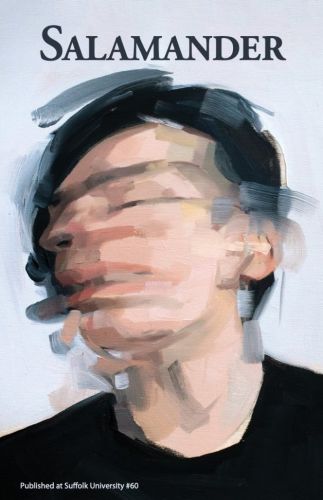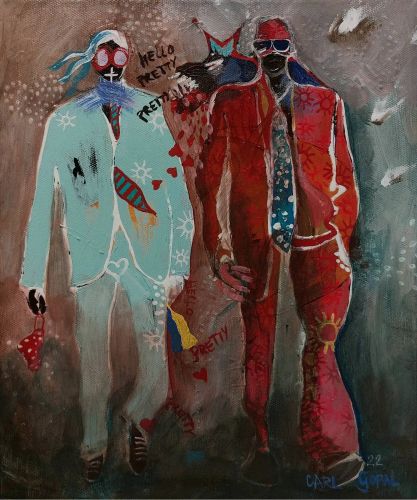Volume 17 Number 2
Autumn 2011
Biannual
Joanna Kurowska
It would be a greater justice to write an eight-word review of this volume of Bitter Oleander. Stating simply: “Read the volume! It’s worth your time!” would spare having to select a few pieces from a collection in which each and every piece offers something insightful, interesting, or beautiful. The volume contains sixty-nine poems (free verse or prose), four pieces of short fiction, and an interview. It features writers representing many cultures: American, Azorean, Canadian, Chinese, Estonian, Faroese, French, and Korean (which doesn’t even begin to recognize the complex multicultural heritage/experiences of many of the writers).
It would be a greater justice to write an eight-word review of this volume of Bitter Oleander. Stating simply: “Read the volume! It’s worth your time!” would spare having to select a few pieces from a collection in which each and every piece offers something insightful, interesting, or beautiful. The volume contains sixty-nine poems (free verse or prose), four pieces of short fiction, and an interview. It features writers representing many cultures: American, Azorean, Canadian, Chinese, Estonian, Faroese, French, and Korean (which doesn’t even begin to recognize the complex multicultural heritage/experiences of many of the writers).
The volume’s longest piece is the interview with the interdisciplinary artist Fiona Sze-Lorrain. As a poet, composer, and instrumentalist, Sze-Lorrain articulates many insights about the process of writing poetry. She believes that a poet should seek her/his “secret well of interiority”—since “individuality is interiority.” Poetry must be free from the constrictions of group thinking, conventions, cerebral abstractions, and narcissism. Rather, poetry “speaks about one’s interior world, and how it opens to the unknown beyond.” As such, poetry is not what some “write from their heads.” Instead, it is “emotionally organic” (healthy) and “loyal towards life.” “Being alive—and the feeling of being alive—is the key,” says Sze-Lorrain, who is also featured in the volume as the author of eighteen poems. One of her pieces, “Towering,” seems to be a well-chosen application of her ideas about writing as the following excerpt demonstrates:
I can’t speak for accidents elsewhere,
only for forms, lines and thoughts
trying to dialogue
on charts and water. Believe me,
answers are always small.
Sze-Lorrain’s romantic-intuitive concepts regarding the creative process seem pertinent with regards to the poems by other authors as well. The “loyalty to life” reverberates in recurring images of specific places and moments evoked in the entire collection. For example, in Robert Pesich’s poem “And What Will You Admit,” a grieving person finds himself on a “shoreline / where nothing more can be done / but let the birds and breaking / waves speak.”; It reverberates in the image of a destroyed city in Ray Gonzalez’s powerful poem “The Enraged Angel”: “I move down San Cristobal and see / the empty well, the house of the espanto / refusing to burn.”; And finally, it reverberates in Alan Britt’s poem “Plus the One Before That”: “Eventually we entered the garden of Spain; / it was night; I’m certain; the piano / was made of jasmine, gardenias & wild roses.”
Due to such concentration of images evoking space and spatial relations, the issue becomes a sort of a collection of “poetry of landscape,” whose details vary from minute ones—such as the details of a flower in the poem “Flower” by Yi Lu’s: “How does it know … / that pistil must spiral like a pond for a look more placid and reserved”—to the more cosmic ones—as in Laurence Werner David’s “Wash”: “The moon herself flows / over what of the wharf has remained silent. // Clear is her center, / unknown her native ores.”
The “landscape” created by such spatial details is filled with philosophical and moral significance. Thus, Yi Lu’s flower leads to the ontological question: “How does flower invent itself”; whereas David’s personified moon “Wants her too shiny flesh to be stripped off. / Her cleft is swollen”—which evokes the sense of bewilderment characteristic to the human rather than natural world.
Another interesting feature of this volume is that the poems—some of them in Chinese, Faroese, and French, followed by English translations—bring to mind their authors’ native landscapes. For example, Randi Á Ryggi’s cycle “Weathersick” brings the unique aura of the Faroe Islands: “i walk north í stong / to watch ritan cross the fjord. // southerly winds.”
Also the four pieces of short fiction included in this volume evoke unique “landscapes.” Peter Tieryas Liu’s “Gradients” presents the American-dream-in-reverse, as it focuses on a homeless community dwelling in an abandoned amusement park. The story surprises us also by revealing how much history and truth can be found through studying human excrement.
Antoinette Constable’s “Spiderweb Crack” is a moving tale of a child’s tragedy caused by violence and the adults’ inability to read the child’s emotions. Stephanie Dickinson’s “In the Forest” focuses on children with disabilities. The narrator’s painstaking efforts to involve her pupils in various activities clash with the bureaucratic approach of her supervisors. Finally, translated from the Estonian, Kristiina Ehin’s “Lena of the Drifting Isle” is a part-fantasy, part-myth, largely told by its title heroine who is a skeleton! The story brims with humor, as for example in the scene when Lena “took a sip of her lemon water [which] trickled down along her beautiful white bones.”
In summary—“Read the volume! It’s worth your time!”
[www.bitteroleander.com]




